
When King Rama V was in power on the throne played an important role during negotiations with France, Thai government inevitably made a treaty with France granting the area of current Trat Province to the western country in order that France would withdraw its force from Chanthaburi Province. Later, on March 23, 1906, the King had to grant areas, namely Pratabong, Siem Reap and Sri Sophon to France in exchange with Trat, islands and towns on the right bank of Mekong River. Hailed as a triumph for Thailand, the people of Trat erected the Rama V Monument which today can be seen at the City Hall and to this very day they celebrate 23 March as their ‘Independence Day’ and the ‘Trat Recalling Day’ is held every year to commemorate these events and the King who freed Trat from foreign rule.
While nationalistic demonstrations and anti-French rallies were held in Bangkok, border skirmishes erupted along the Mekong frontier. The superior Royal Thai Air Force conducted daytime bombing runs over Vientiane, Sisophon, and Battambang with impunity. The French retaliated with their own planes, but the damage caused was less than equal. The activities of the Thai air force, particularly in the field of dive-bombing,was such that Admiral Jean Decoux, the governor of French Indochina, grudgingly remarked that the Thai planes seemed to have been flown by men with plenty of war experience.

In early January 1941, the Thai Burapha and Isan Armies launched their offensive on Laos and Cambodia. French resistance was instantaneous, but many units were simply swept along by the better-equipped Thai forces. The Thais swiftly took Laos, but Cambodia was more difficult to take.
At dawn on January 16, 1941 the French launched a large counterattack on the Thai-held villages of Yang Dang Khum and Phum Preav, initiating the fiercest battle of the war. Because of over-complicated orders and nonexistent intelligence, the French counterattacks were stopped and fighting ended with a French withdrawal from the area. The Thais were unable to pursue the retreating French, as their forward tanks were kept in check by the gunnery of French Foreign Legion artillerists.
As the situation on land was exacerbating for the French, Admiral Decoux ordered the available French naval forces into action in the Gulf of Thailand. In the early morning of January 17, the French navy caught a Thai naval detachment at anchor off the island of Koh Chang. The subsequent Battle of Koh Chang proved a victory for the French and resulted in the sinking of two Thai torpedo boats and a coastal defence ship.
January 17, 1941 Royal Thai Navy engaged the French in a major naval battle in the waters to the South East of Koh Chang, during the French-Thai War and resulted in a decisive victory by the French over the Thai Navy. Despite the fall of France in 1940 the Vichy government still held sway over France's colonial territories abroad. One of these territories was French Indochina, what we know today as Vietnam, Cambodia and Laos. With the defeat of mainland France, obvious doubt was thrown over her ability to defend the far-flung outposts of the empire. French Indochina held a particular attraction to her neighbour to the west, Thailand.
During the war years, one of the aims of the Siamese (Thai) military government was to promote patriotism among Thai people. The sentiment of the day was to reclaim Siam’s former conquered lands in Indochina. These lands had been lost through a series of treaties and forced annexations by colonial France during the period of 1867-1906, under the reign of King Chulalongkorn. The defeat of France by the Nazi military stimulated the Thai military government to think about regaining the lost territories.

In late 1940 the Thais began a series of raids by troops and aircraft against the French possessions, aimed at annexing those parts of French Indochina which the French were unable to hold on to. These attacks tended to concentrate in the coastal regions of Cambodia, to the west of Saigon. The Thais naturally saw themselves as filling a vacuum which had been created by the deflation of French colonial power. The French, however, had other ideas and a state of war was assumed between Vichy France and Thailand (then still often referred to as Siam). Since the main thrust of the Thai assaults had been along the coast, the French considered a naval operation against the invaders, although there was grave concern over strengths of the Thai armed forces which would oppose such a mission.
The Royal Thai Navy had been modernized with the recent acquisition of vessels from Japan and Italy. The major units of the fleet included two Japanese-built armoured coast defence vessels which displaced 2,500 tons and carried 8" guns, two older British built armoured gunboats with 6" guns, twelve torpedo boats and four submarines. In addition the Royal Thai Air Force had in its inventory over 140 aircraft, including relatively modern Mitsubishi Ki-30 light bombers, which saw extensive service against the French. These aircraft in themselves were quite capable of causing severe damage to any French naval mission which may be mounted. Other less capable aircraft in the Thai inventory included P-36 Hawk fighters, 70 Chance-Vought O2U-2 Corsair biplanes, 6 Martin B-10 bombers and several Avro 504 trainers.

Despite the strengths of the Thai forces the French Governor General of Indochina and Commander-in-Chief Naval Forces, Admiral Jean Decoux, decided that the naval mission should go ahead. A small squadron, the Groupe Occasionnel, was formed on 9th December 1940 at Cam Ranh Bay, near Saigon, under the command of Capitaine de Vaisseau Régis Bérenger. The squadron consisted of the light cruiser Lamotte-Piquet, the colonial sloops Dumont d'Urville and Amiral Charner, and the older sloops Tahure and Marne. There was no air cover to speak of, apart from eight Loire 130 seaplanes based at Ream which provided reconnaissance. Additional scouting was provided by three coastal survey craft, and intelligence gleaned from the local fishermen.

Bérenger's squadron began training manoeuvres in Cam Ranh Bay shortly after coming together. Early in the new year, on January 13, 1941, Admiral Decoux formally requested Bérenger to send the squadron against the Thais to act in support of a land offensive planned for January 16. This operation was intended to throw back Thai forces which had been advancing along the coast. Because of the disparate speeds of the French ships Bérenger sent the slower sloops on ahead, whilst he remained in Saigon to complete the final elements of the plan. Several options were currently being prepared, the Admiralty in Paris having recently given its formal blessing to the use of naval forces in support of the army. The final planning meeting of the 13th saw an immediate delay in the execution of the operation for 24 hours. With the plans finalised, Bérenger sailed in Lamotte-Picquet, the delay in the start of the operation allowing him to refuel at Cap St. Jacques before the rendezvous with the slower ships at 16:00 on the 15th, 20 miles North of Poulo Condore.

The orders from Admiral Decoux were clear and simple, "Attack the Siamese coastal city from Rayong to the Cambodian frontier to force Siamese government to retreat the arms force form Cambodian frontier". On the evening of the 15th, following a final conference on board the flagship, the squadron weighed anchor at 21 15 and closed the Thai coast at 14 knots, the best speed of the sloops. The French ships remained undetected as they entered the Gulf of Siam, but their quarry was not so lucky. The Loire 130s from Ream had completed a sweep of the coast from Trat to Satahib (Sattahip). They had located one coast defence ship and two torpedo boats at Koh Chang, and one gunboat, four torpedo boats and two submarines at Satahib. Their report was sent to Marine Headquarters in Saigon, who retransmitted the report to the Lamotte-Picquet. Bérenger considered his options in the light of this intelligence and opted for a dawn attack on Koh Chang. He discounted an attack on Sattahib because it was not possible for the sloops to reach the port until later in the day, by which time the Thai force was likely to have been alerted to the French presence and the element of surprise would be lost. In addition there was doubt as to the contribution which the harbour defences at Satahib could make. Finally the force at Koh Chang, although formidable, was the weaker of the two and was thought to offer the best chance for victory.
Bérenger's plan of attack was as follows. The squadron would approach at dawn from the South West. Because the anchorage at Koh Chang was surrounded by islands and islets, many of which were over 200 metres high, the squadron would break up and use the cover of the islands to concentrate fire on portions of the Thai squadron whilst covering all the avenues of escape. The easternmost channel was regarded as the most likely route by which a breakout would be made - this was the most suitable route and was also the area in which the recce report had placed the largest Thai ships. The Lamotte-Picquet would head to the eastern side of the anchorage to block this route whilst the colonial sloops blocked the centre and pounded the Thai ships there. The smaller French ships would concentrate to the West.

The French squadron closed on the anchorage at 05:30 on January 17. At 05:45 they split into the three groups as planned, the Lamotte-Picquet heading for the Eastern part of the anchorage, Dumont d'Urville and Amiral Charner continuing to the central position and the Tahure and Marne heading for the Western side. Conditions were perfect — the weather was fine, the seas calm and almost flat. Sunrise was due at 06:30, and the scene was lit only by the first rays of light on the horizon and by the dim moonlight. A final aerial reconnaissance of the target area had been arranged using one of the Ream-based Loire 130s (Lamotte-Picquet carried two such aircraft, but these could not be launched due to catapult problems). At 06:05 the Loire 130 overflew the anchorage and reported two torpedo ships. This came as a nasty surprise to the French — previous reports led them to believe that only one of the torpedo boat was present, but during the night the HTMS Chonburi had arrived to relieve the HTMS Chantaburi, which was to return to Satahib later that day for repairing. Once their presence had been passed to the Lamotte-Picquet the aircraft attempted an attack of its own using bombs, but was forced off by a heavy barrage of fire. The effect of this mission was double edged — the French were now aware that they faced both the Thai units, but the element of surprise had been wasted and there was still thirty minutes to go until sunrise. Caught napping by the oncoming French the Thais desperately began to raise steam and make preparations for slipping their anchors. but the torpedo boats were sunk by gunfire from the Lamotte-Picquet.
At 06:38 the lookouts on the Lamotte-Picquet spotted the coastal defence ship, the HTMS Thonburi, at a range of 10,000 metres heading to the northwest. A running battle ensued with the fire of both ships frequently blocked by the towering islets. The fire from the Thai ship was heavy, but inaccurate. By 07:15 fires could be seen on the HTMS Thonburi, which then found herself engaged not only by the cruiser but also by the sloops. In the beginning of the engagement, a lucky shot from the Lamotte-Picquet killed the captain of the HTMS Thonburi, Commander Luang Phrom Viraphan, and disrupted her operations. Believing they had a better chance of hurting the smaller French ships the Thais shifted their fire onto the Amiral Charner, which soon found 8" salvoes falling around her. The HTMS Thonburi shifted fire back to Lamotte-Picquet after a salvo from the French cruiser put her after turret out of action. Soon she reached the safety of shallow water which the French ships could not enter for fear of grounding, but it all came too late for the hapless Thais as the HTMS Thonburi was burning fiercely and listing heavily to starboard. Her remaining turret was manned and hand and could not fire unless the manoeuvers of the ship put it in appropriate position. At 07:50 the Lamotte-Picquet fired a final salvo of torpedoes at a range of 15,000 metres but lost sight of the HTMS Thonburi behind an island from which she was not seen to emerge.

For the next hour the French ships patrolled the area, picking up survivors and ensuring their victory was total. At 08:40 Bérenger ordered the squadron to head for home, but this coincided with the start of the expected Thai air attacks. Several bombs were dropped close to the Lamotte-Picquet and one hit was scored, although the bomb failed to explode. A vigorous barrage was put up by the ship's AA guns and further attacks were not pressed home. The final raid departed at 09:40, following which the victorious French squadron returned to Saigon.
The French left behind them a scene of total devastation. The HTMS Thonburi was heavily damaged and hard aground on a sand bar in the mouth of the Chantaboun river. She was later raised and repaired by the Japanese, survived the war and was used as a training ship until she was retired. The Thai transport HTMS Chang arrived at Koh Chang shortly after the French departed and took the HTMS Thonburi in tow . The torpedo boats HTMS Chonburi and HTMS Songhkla
 had both been sunk. The only survivors were rescued by the torpedo boat HTMS Rayong, the minelayer HTMS Nhong Sarhai and the fishery protection vessel Thiew Uthok. These three ships, which had been sheltering to the north of Koh Chang, wisely chose not to break cover and thus were not observed by the French. At a stroke the cream of the Royal Thai Navy (except the four submarines) had been wiped out. The French were elated, for they had inflicted a defeat as decisive in its way as the Japanese at Tsushima. Their success is all the more notable when the difficulties of navigating and fighting in such confined waters are considered, and given the courage and tenacity which the Thai sailors exhibited during the action (a fact which the French were gracious to accept). In the end though it was all for nought — five days later the Japanese government offered to arbitrate in the search for a peaceful settlement, and soon confirmed the Thai annexations. Even this state of affairs did not last for long, as Thailand was invaded later that year during the attacks on Malaya, and was forced to return her short-lived gains to France at the end of WW2.
had both been sunk. The only survivors were rescued by the torpedo boat HTMS Rayong, the minelayer HTMS Nhong Sarhai and the fishery protection vessel Thiew Uthok. These three ships, which had been sheltering to the north of Koh Chang, wisely chose not to break cover and thus were not observed by the French. At a stroke the cream of the Royal Thai Navy (except the four submarines) had been wiped out. The French were elated, for they had inflicted a defeat as decisive in its way as the Japanese at Tsushima. Their success is all the more notable when the difficulties of navigating and fighting in such confined waters are considered, and given the courage and tenacity which the Thai sailors exhibited during the action (a fact which the French were gracious to accept). In the end though it was all for nought — five days later the Japanese government offered to arbitrate in the search for a peaceful settlement, and soon confirmed the Thai annexations. Even this state of affairs did not last for long, as Thailand was invaded later that year during the attacks on Malaya, and was forced to return her short-lived gains to France at the end of WW2.
HTMS Thonburi was later raised by Royal Thai Navy. She was repaired in Japan and was used as a Training ship until she was decommissioned. Her gun and deck are placed as a memorial in the Royal Thai Naval Academy, Samut Prakan.
During the post-action investigations it was claimed, on the evidence of sailors and the fisherman around Koh Chang, that heavy damage was seen to have been caused to Lamotte-Picquet and her fleet. The report claims that the crew of Lamotte-Picquet spent all of the following night
repairing the damage
The Royal Thai Air Force launched an air strike on the French battle group after the battle. Corpral Chamraj Moungpaseart (who ended his career as a Wing Commander) flew Corsair V 93 S and dropped one 50kg. bomb on Lamotte-Picquet but the bomb failed to explode.
The Indochina war under siege from the French on January 17, 1941 the French Navy crossed into Thai waters and a fierce battle with Thai ships ensued. Whilst the Thais won and were successful in driving away the French, the war which has since been called the ‘Koh Chang Naval Battle ( Thai : Yuttanavy Koh Chang )’ laid claim to numerous Thai lives as well as the three Thai battleships ‘Songkhla’, ‘Chonburi’ and the ‘Thonburi’. As a mark of respect for those who lost there lives fighting for their country the Thai Navy holds a merit. and organise the Recalling Day every year making ceremony each year on January 17.








 Thailand Baht Exchange Rate
Thailand Baht Exchange Rate












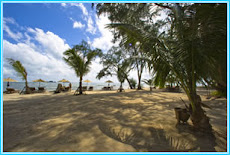

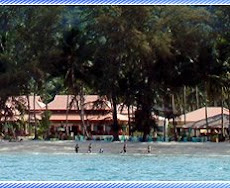


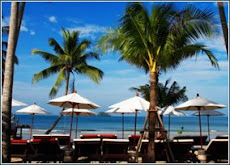






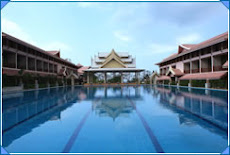









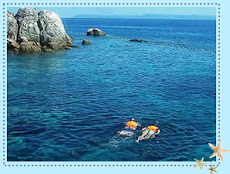
No comments:
Post a Comment